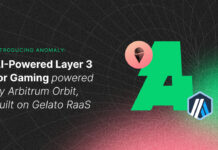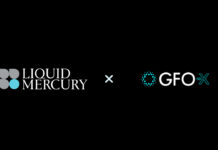
China has been a continuous source of innovation in blockchain, with projects like NEO and innovative initiatives like the blockchain-focused Xiong’An smart city. Achain (ACT) is yet another Chinese blockchain project that is delivering innovation. Here’s everything you need to know about Achain fork technology as well as this project’s mission, technical features, ecosystem, and more.
Project Mission
Achain was founded in 2015 and is a blockchain project committed to building a boundless blockchain world. At its core, Achain aims to utilize technical solutions to solve many issues facing current blockchains. In addition to focusing on factors like transactions per second, the project is also working on improved interoperability amongst blockchains. This interoperability connects both the blockchain and non-blockchain world in a way that is accessible to mainstream users.
According to the project’s whitepaper, Achain provides cutting-edge designs like a virtual machine, smart sandbox, value exchange protocol, and forking mechanism. These and other factors are what makes Achain capable of reaching, or even surpassing, 1000 TPS.
Consensus Algorithm Details
Achain utilizes a modified DPoS, called result-delegated proof of stake (RDPoS) to establish node consensus. This consensus mechanism has multiple possible advantages over others. It is capable of achieving better energy efficiency, and it also features more frequent elections, which makes the process of throwing out bad actors much easier than with traditional algorithms. Achain’s RDPoS is intended to be better than DPoS for one main reason: while DPoS only allows one validator to generate a block, RDPoS enables all of the top 99 validators to participate in transaction verification in some instances if needed.
Up-to-date stats on Achain (ACT) transactions can be found on the Browser site.
Achain Fork: Theory and Implementation
While there are various technical innovations offered by this project, Achain fork (a.k.a. forking network) is without a doubt the most anticipated. With Achain, you can fork multiple new blockchains easily. You can even continuously fork from a newly created blockchain.
Why is Achain fork technology important? All forked blockchains are equal, which means they are not hierarchical from a technical or economic perspective. Additionally, the project offers a blockchain as a service (BaaS) solution that utilizes multiple programming languages and visualized development to reduce the difficulty of adoption. This means that developers of various programming backgrounds could potentially create an Achain fork.
As of October 2018, programming language support for Achain development includes Lua, Solidity, Java, and C#.
An Ecosystem of Dapps and Parallel Chains
Another issue that blockchains face today is how to grow their respective ecosystems. For the most part, Ethereum is clearly the leading platform (in terms of current user adoption) for people wanting to develop dapps and utility tokens. Achain, however, has already grown its ecosystem quite nicely just within the past few years.
The Achain ecosystem is divided into two main categories: dapps and parallel chains. Even though there is currently only one parallel chain (SelfSell), there are seventeen different dapps available that span across eight different categories. These classifications include exchange, entertainment, finance, payments, network, marketplace, services, and protocol. When compared to the vast majority of blockchains, Achain has made a lot of progress in building its ecosystem.
Examples of Achain Dapps
Heluss aims to disrupt the insurance industry. First, the project is focusing on offering technologies like AI-based claims management and smart contracts for travel insurance. As the community grows, the project team plans to subsequently introduce insurance solutions for auto, home, and loan as well.
GymChain is a dapp within the Achain ecosystem where you can use AI-driven, wearable smart devices to collect health and fitness performance information and upload to a decentralized blockchain. This solution allows you to form customized exercise plans based off of data analyses.
WeatherBlock is a project that uses blockchain and IoT sensors as a means to improve granular level data and location-based weather forecasting.
Achain Price Analysis and Exchanges
Much like other cryptos, Achain’s price has fluctuated significantly over time. The earliest available data from August 2017 shows that the price was around $0.20 to $0.23. Unlike other cryptocurrencies, however, Achain’s price went down significantly in September 2017 to prices lower than $0.04. Achain’s price reached an all-time high of $1.34 in January 2018. Since August., prices have hovered just above and below $0.03
Achain (ACT) has several notable exchange listings, particularly with popular Asian exchanges like Huobi, OKEx, and KuCoin. In terms of exchange trade volume, CoinEgg appears to be the most popular, followed by Bitforex and Huobi. Trading pairs vary across exchanges. Some examples include cryptocurrencies like BTC, ETH, and USDT as well as fiat currencies like USD, TRY, and IDR.
Team and Partners
On the project website, only info about CEO Tony Cui is listed. Cui has a few significant accomplishments, including winning the Future Star award from the Zhongguancun Alliance and being listed in the 30 under 30 on CYZONE, a famous venture capital magazine. On LinkedIn, 51 people are listed as employees at Achain. Most of the team is based in Beijing.
Achain also has a few key industry partners. It has even co-organized a “Blockchain Technology Open Course” with Tsinghua University, which is widely recognized as one of the world’s top universities.
Roadmap
The roadmap for Achain development is fairly detailed. However, most goals listed are development-oriented rather than marketing or design. Still, it’s important to note that focusing on making the protocol interoperable and building a technology that is more accessible to mainstream adoption could also be considered a marketing-oriented part of this project.
There are three major phases with projected completion dates listed. These include Singularity (completed Q1), Galaxy (ongoing), and Cosmos (complete at the end of Q4). One thing to note is that dates for these phases are not consistent between the homepage and the whitepaper. This could be simply due to a scenario in which phase names remain the same while new goals and timeline dates within those phases continue to change. In January 2019, the project will update the website to reflect roadmap goals for the new year.
Conclusion
Looking at the current landscape of blockchain projects, Achain certainly offers the possibility of much-needed technical innovations. The ability to easily create an Achain fork, as well as, the protocol’s unique RDPoS consensus algorithm make this a promising project. It will be interesting to see how Achain builds upon its accomplishments, and how the project team continues to develop a long-term strategy for improving the protocol’s technical capabilities and increasing participation in its ecosystem.
For the latest cryptocurrency news, join our Telegram!

Coincentral.com is author of this content, TheBitcoinNews.com is is not responsible for the content of external sites.
Our Social Networks: Facebook Instagram Pinterest Reddit Telegram Twitter Youtube











